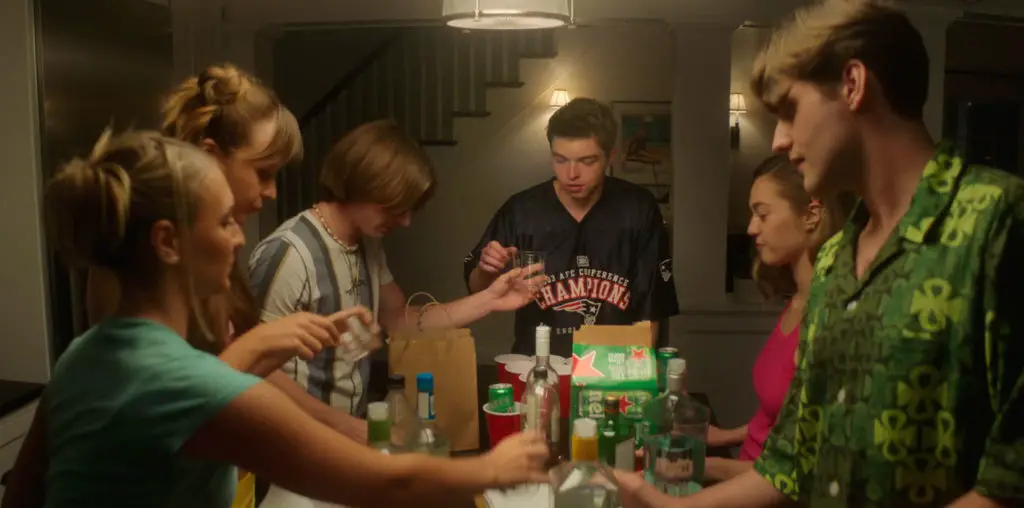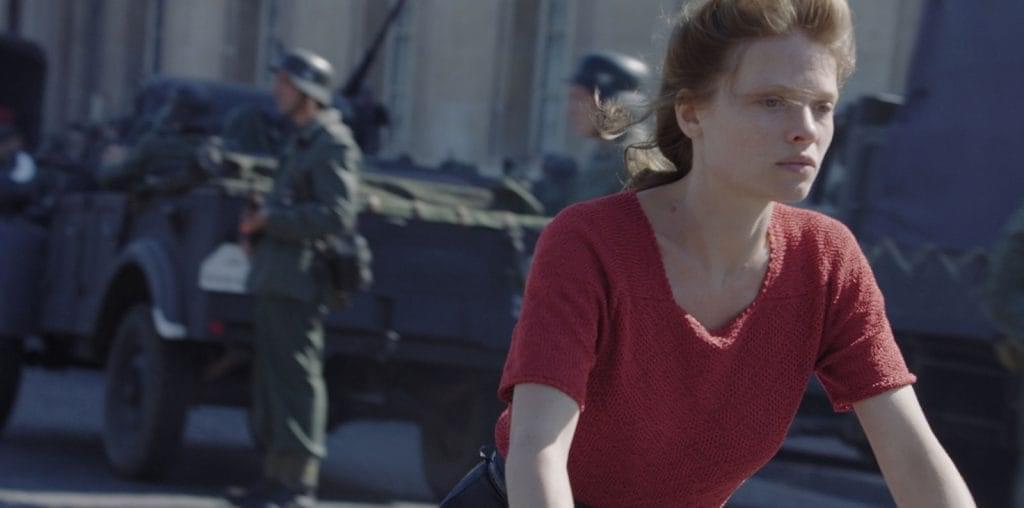
In 1952, Broadway audiences were charmed by the musical-comedy revue “New Faces,” which introduced a line-up of bright and talented young performers to the spotlight. The show was a huge success and 20th Century Fox brought the cast to Hollywood to recreate the production for movie audiences. The resulting 1954 film version of “New Faces” turned into one of the most winning diversions of that decade…though strangely, the film has become virtually forgotten over time and is rarely seen today.
Tied together by a wispy plot involving a cash-strapped production holding off a creditor until a chorine’s millionaire Texas uncle can foot their bills, “New Faces” provides a rapid series of buoyant musical numbers, an occasional dance interlude, and comedy sketches. The comedy, which was co-written by a then-unknown gagman named Mel Brooks, was fairly topical (a Senate investigation into the youth-corrupting influence of bebop jazz, a spoof of Truman Capote/Tennessee Williams-style Southern degenerate literature). Not surprisingly, the skits have dated very quickly, although anyone with a sense of history will be able to follow along with a laugh or two.
The music of “New Faces” provides a delightful time capsule of the popular tastes of the pre-rock era. The emphasis is generally on frivolity and fun, with a wealth of love songs and comic novelty numbers. The most joyfully bizarre piece here incorporates the trial of Lizzie Borden into an old-fashioned ho-down, with the jury acquitting the accused with the warning that, “You can’t chop your poppa up in Massachusetts!” (The film was among the first musical productions shot in CinemaScope and director Harry Horner, a B-Movie helmer who rose to create his only A-level production here, wonderfully fills the extra-wide screen during the kinetic dance interludes). For some reason, the film puts the merriment on hold for one heavily dramatic musical tale. Two elderly sisters ruefully recall a fateful coming-out party that condemned them to spinsterhood — the scene offers a heartbreaking shot of drama that comes out of nowhere and seems wildly out of place.
Most people who recognize the name “New Faces” generally recall it as the vehicle which launched the career of Eartha Kitt. Enjoying the good fortune of snagging the best songs in the show (including “C’est Si Bon,” “Santa Baby,” “Monotonous” and “Uska Dara”), Kitt responded to her big screen break with gusto, projecting a magnetic exoticism and in-your-face sexuality which stopped the show each time she came on. Beautifully photographed and costumed, she wore the role of the revue’s sex kitten (a taboo-busting concept for a black performer in 1954) without the heavy-handed camp which would later strangle her effectiveness as a performer. Although she continued to work in films and is still more than active, Kitt never had the chance to duplicate the on-screen excitement of her “New Faces” breakthrough in subsequent roles.
“New Faces” also brought about feet-in-door opportunities for several performers who later enjoyed second-tier stardom. Paul Lynde saw his break here thanks mainly to a pair of sketches: a wonderfully morbid monologue in which he is the traumatized and heavily-bandaged survivor of a safari from Hell and a skit where he plays an aging criminal who is heartbroken to learn his son is growing into a law-abiding honor student. The second skit included the funniest use of a single letter in film history: Lynde clutches his son’s report card and, horrified at the academic excellence which will ultimately deny him an heir in his crime business, runs off-screen screaming aloud the boy’s straight A grades, stretching the letter “A” into a piercing wail of Greek tragedy proportions.
Diminutive French actor Robert Clary (who later starred on “Hogan’s Heroes”) turns up performing a series of novelty musical numbers, including a humorous tale of a schoolboy’s unrequited love for his teacher and a celebration of the good life in the guise of the Gallic bon vivant Lucky Pierre. A running gag has tiny Clary as the wild object of affection from statuesque showgirl Virgina De Luce, who nearly clobbers the petite Frenchman with her cleavage whenever they embrace. Comedienne Alice Ghostley is also on hand, and dancer June Carroll and future Broadway luminary Carol Lawrence can easily be spotted in dialogue-free chorus roles.
Yet for all its charm and cheer, why is “New Faces” virtually ignored today? The film’s intelligent use of CinemaScope damaged its viability for TV broadcast, especially when the pan-and-scan versions obliterate the careful compositions of the dance sequences, so it never enjoyed any renewed life via television. Furthermore, 20th Century Fox neglected to keep up on the film’s copyright and it has since lapsed into the public domain; surviving prints tend to be scratchy and muted in color and no restoration has taken place to date. And frankly, most of the new faces in the cast never achieved any degree of recognition. Aside from the few aforementioned stars, watching “New Faces” leaves the viewer wondering why most of the cast never enjoyed the proverbial fruits of success.
And still, it is truly unfair to toss “New Faces” into obscurity. The film is a wonderful little movie that never pretends to be art and constantly delivers hefty amounts of goodwill. If any musical film deserves to be rescued and appreciated anew, this is the one.

